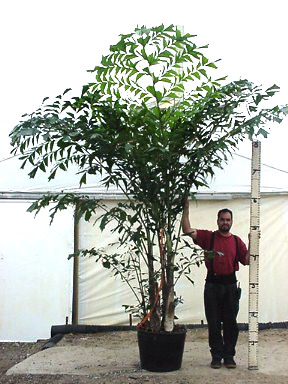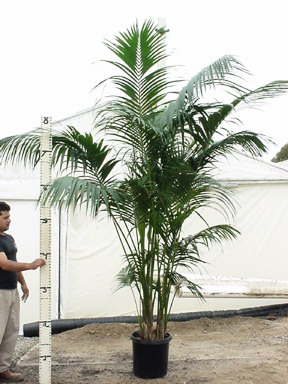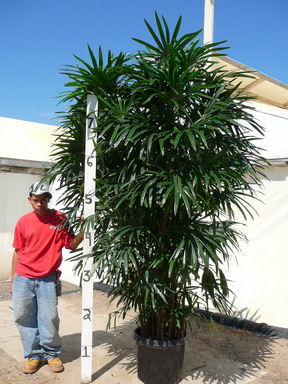Plants


Caryota mitis (Fishtail Palm)
Caryota mitis is native to Southeast Asia where it grows as an understory plant in tropical rain forests. Fishtail Palm is a tough, easy to grow palm that makes a great houseplant. The light green leaflets are shaped like a fish’s tail fin, hence its common name. The bipinnate leaf arrangment of C. mitis creates striking patterns in the canopies of larger specimens.


Howea forsteriana (Kentia Palm)
Howea forsteriana only grows naturally in the Lord Howe Island group, about 500 miles off the eastern coast of Australia. The Kentia Palm is highly prized for its elegant fronds and slender trunk, as well as for its hardiness in indoor environments. It has a canopy of gracefully drooping leaves which produce an airy and poised look. The leaves are pinnate (featherlike) and grow up to 12 foot long with 4-5 foot petioles. Our H. forsteriana are propagated from high-quality seedlings imported from Australia.


Rhapis excelsa (Lady Palm)
Rhapis excelsa has been grown as an ornamental in China and Japan for centuries. They were brought to Europe in the 18th century but didn’t arrive on the American interiorscape scene until the early sixties (used to decorate modern “ranch” houses and Japanese-inspired interiors). This is a hardy palm that can tolerate harsh interior conditions and still look fresh.


Veitchia merrillii (Adonidia Palm, Manila Palm, Christmas Palm)
The Adonidia Palm is native to the Philippines. It is a popular landscaping item in the capital city, a fact which inspires another popular common name: the Manila Palm. It is a beautiful plant, possessing an attractive green crownshaft which supports a compact crown of showy pinnate leaves. We often plant V. merrillii in groups of two or three with the trunks curving outward in graceful arcs.